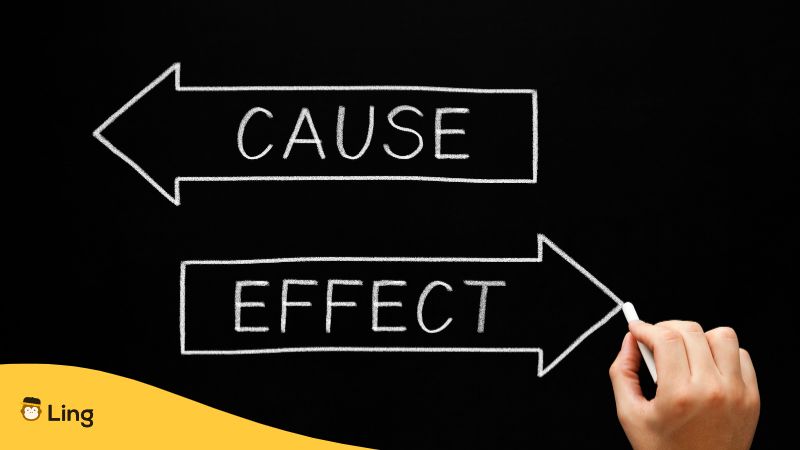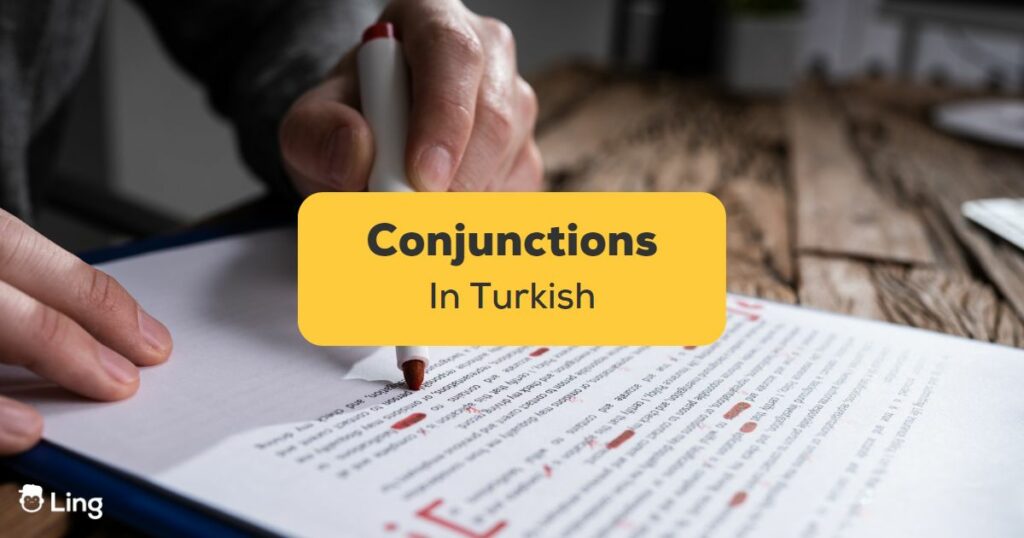Conjunctions are one of the essential components of any foreign language. They connect words, phrases, or sentences, thus allowing us to form more complex and longer sentences. And the Turkish language is no different!
Conjunctions in Turkish, bağlaçlar, play a crucial role in shaping the meaning and structure of a sentence, determining how different ideas and concepts relate to each other. In this article, we will explore the most commonly used conjunctions in modern Turkish, their uses, and see some examples of them in context. So, let’s dive in and learn Turkish conjunctions together!
Page Contents 📑
- Conjunctions In Turkish
- Conjunctions That Connect Sentences Or Words
- Conjunctions That Express Contrast
- Conjunctions That Express Cause And Effect
- Other Conjunctions In Turkish
- Learn Turkish With Ling Now!
Conjunctions In Turkish
Turkish conjunctions connect two or more phrases, while they can also express cause-effect and contrast between sentences.
There are different types of conjunctions in Turkish according to their functions. Understanding the different types allows you to create nuanced sentences and communicate more effectively.
In this article, you’ll learn important conjunctions, with some examples.

Conjunctions That Connect Sentences Or Words
Connecting conjunctions, such as ve (and), and veya (or), are essential for connecting sentences or words in Turkish. You can use these conjunctions to create more cohesive sentences and sound more fluent.
Ve (And)
Like in English, you can use ve to order words and connect phrases or sentences. Turkish “ve” is not used as much as “and” is used in English because there are other suffixes that can replace that conjunction in the Turkish language.
Examples
- Elif ve Ahmet gelmeyecekler. (Elif and Ahmet aren’t going to come.)
- Bir ekmek, yumurta ve bir şişe süt aldım. (I bought bread, eggs, and a bottle of milk.)
- Eve geldim ve olanları gördüm (I arrived home and saw what happened.)
Veya (Or)
You can use this conjunction when offering two alternatives or mentioning two possibilities in a sentence. It has the same function as “or” in English. There is also another correspondence to “or” in Turkish: ya da.
Examples
- İçecek bir şey ister misin? Çay veya kahve? (Do you want something to drink? Tea or coffee?)
- Yalnızken kitap okurum ya da müzik dinlerim. (I read a book or listen to music when I’m alone.)
De, Da (Too, Also)
De is actually a suffix, not a word, but when written separately, it means “too” or “also” in English. However, when written attached to a word, it has different meanings: “when” and “in.”
See the examples below, and you’ll understand them better!
Examples
- Ben de gelmek istiyorum. (I want to come too.)
- Ben tatlı da yemek istiyorum. (I want to eat dessert as well.)
- Anahtarlarını arabada unutmuş. (He forgot his keys in the car.)
If you don’t get it at first, don’t worry too much! I have to say that many native Turkish speakers don’t know how to write these two correctly, whether separate or attached.
Conjunctions That Express Contrast
Some of the most commonly used conjunctions that express contrast are “ama,” “fakat,” and “ancak” in Turkish. They show a contrast between two sentences, so these conjunctions connect a positive clause to a negative one.
Ama (But)
Ama is the most frequently used conjunction to express contrast or contradiction. You can use it to link two phrases or sentences that present opposing ideas. Natives use another conjunction, “fakat,” which has the same meaning and function as “ama.” Here are some examples for you:
Examples
- Onu seviyorum ama güvenmiyorum. (I love him, but I don’t trust him.)
- Bugün hava çok güzel ama dışarı çıkmak istemiyorum. (The weather is so beautiful today, but I don’t want to go out.)
Ancak (However)
Ancak is another commonly used conjunction in Turkish that express contradiction. It sometimes expresses a conditional situation in a clause. Other than that, it functions just like “ama.” Let’s see some examples below:
Examples
- Televizyon açık ancak kimse izlemiyor. (The TV is on, however, nobody watches it.)
- Yemek güzel görünmüyor ancak lezzetli. (The food doesn’t look good, however, it is delicious.)

Conjunctions That Express Cause And Effect
Some Turkish conjunctions express cause and effect, such as “çünkü,” “bu,” “yüzden,” “dolayısıyla,” etc. You can use these conjunctions when one clause describes the cause, and the other clause describes the result. They are mainly used in complex sentences to clarify the meaning.
Çünkü (Because)
Çünkü is a conjunction in Turkish that means “because.” It is used to join two clauses where the first clause provides a reason or explanation for the second clause. Here are some examples:
Examples
- O gelemedi çünkü hastaydı. (She couldn’t come because she was ill.)
- Yemek yiyemedik çünkü toklardı. (We couldn’t eat because we were full.)
Ki
Ki is originally a Persian conjunction that Turkish borrowed in the 13th century. It doesn’t have a literal translation in English, but it’s similar to “so that, “so as to,” etc. It is a tiny yet quite versatile conjunction. We’ll focus only on one of its functions, which is expressing cause in a sentence. See the examples below, and you’ll get it better!
Examples
- Çalış ki başarılı ol. (Study so that you can be successful.)
- Sessiz ol ki bebek uyuyabilsin. (Be quiet so that the baby can sleep.)
Other Conjunctions In Turkish
Here are some more conjunctions that you might find useful:
Learn Turkish With Ling Now!
Want to learn Turkish? Look no further than Ling, the best practical language-learning app!
With Ling, you can learn over 60 languages at your own pace and on your own schedule. Our app features interactive lessons, engaging games, and real-life simulations that help you master the language skills you need to communicate effectively with native speakers.
Plus, Ling’s easy-to-use interface makes tracking your progress and staying motivated easy. So whether you already know some Turkish or are a complete beginner, Ling has everything you need to take your language skills to the next level.
So why wait? Download Ling today from the Play Store or Apple Store and start your language-learning journey today!
One last thing before you leave, don’t forget to visit our Turkish blog weekly, so you don’t miss new articles about the Turkish language and culture!
































































